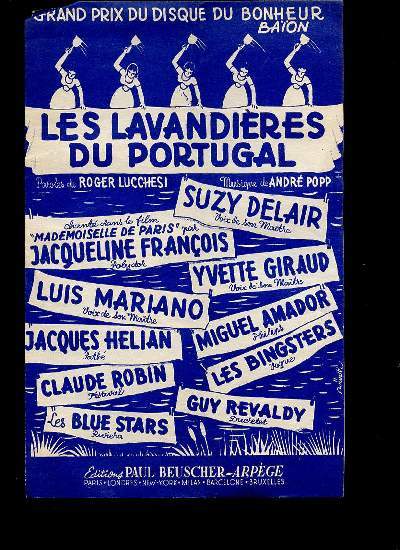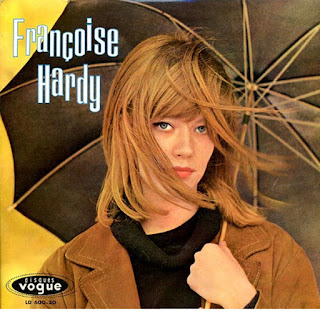What was the first number one record in France?
:format(jpeg):mode_rgb():quality(90)/discogs-images/R-7404195-1440783844-9390.jpeg.jpg) Actually, neither of the above facts are entirely true - at least, they are only true when it comes to record sales. Prior to that, hits were registered on the basis of sheet music sales, and so the first UK number one apparently dates to October 1936 and the first American one goes back to 1913 or 1914! But of course, they were not number one records...
Actually, neither of the above facts are entirely true - at least, they are only true when it comes to record sales. Prior to that, hits were registered on the basis of sheet music sales, and so the first UK number one apparently dates to October 1936 and the first American one goes back to 1913 or 1914! But of course, they were not number one records... But what about France?
Strange as it may seem, despite a thriving record (and sheet music) market before the war, France was slow to develop a hit parade of its own. True - record sales during the forties and fifties were siginficantly lower than in many other countries, but the country's chanson and musical hall traditions were hugely popular during this period. Indeed, Tino Rossi's eternal Yuletide smash "Petit Papa Noël" was first released in 1946 and remains the biggest selling French single of all time, while in Édith Piaf, the country produced one of the most popular singers in the world. Nevertheless, the forties came and went without any sort of hit parade appearing, and it would be the middle of the next decade before the first chart appeared in the pages of the newspaper Le Figaro.
Inevitably, it was a sheet music chart (even though record charts were now appearing elsewhere, sheet music remained a vital cog in the music industry at a time when more homes had pianos than gramophones). This chart appeared in September 1955 and the first number one was "Les lavandières du Portugal", a French song composed by André Popp (who would compose any number of hit songs over the years) with lyrics by Roger Lucchesi. (The song would go on to become an American hit for Joe "Fingers" Carr in 1956 as "The Portuguese Washerwoman".) But who was the singer?
That is, of course, the problem with sheet music charts - they are not tied to a particular recording. While the first singer to record and release it was Jacqueline François (who sang it in the film Mademoiselle de Paris, released in June 1955), the same year saw versions by Yvette Giraud, Renée Lebas, Luis Mariano and Jacques Hélian's orchestra (with vocal), not to mention an easy listening version by Franck Pourcel , an accordion version by André Verchuren and a piano version by Francine Adam. Many, many more would follow during 1956. François, Giraud and Mariano were all big stars at the time, and it is likely that each version sold well. So which performer then, had the first number one record?The answer came a month later, when Music Hall magazine published the first French hit parade based on record sales. it was only a top ten, but happily, the number one on that first chart was also "Les lavandières du Portugal", and the magazine stated, very clearly, that the performer was Jacqueline François, making her the first performer to have a number one hit in France.
By 1955, shellac 78 r.p.m. singles were beginning to decline in favour of new "unbreakable" 45s, so Jacqueline's record was available on the smaller format, but this being France, where EPs were far more popular than the singles favoured elsewhere in the world, this meant a four-track "super 45", complete with colour photograph of the singer on the sleeve.
Two of the other three songs on Jacqueline's EP were also proving popular with record buyers. The second track, "Un jour tu verras" was also in the sheet music chart, while a version by Mouloudji was in the top ten on the record chart at # 8. There were several other versions on the market, notably one by Anny Gould and another by Michèle Arnaud (who would represent Luzembourg at the first Eurovision Song Contest and who would later go on to co-produce Pink Floyd's Live At Pompeii film - true!) although none sold as well as those by Mouloudji or François. "Lola (la légende du pays aux oiseaux)" was a French version of George Shearing's jazz favourite "Lullaby Of Birdland", and was also in the sheet music chart, thanks in large part to the version by Les Blue Stars, fronted by an expatriate American, Blossom Dearie. Closing out the EP was "À t'regarder", a composition by two rising stars of la chanson française , Jean Constantin and Charles Aznavour.:format(jpeg):mode_rgb():quality(90)/discogs-images/R-7338060-1439632730-5843.jpeg.jpg)


Thank you ! I enjoyed listening to that first hit, not a bad one for the FIRST one - definitely sounds like it comes from a film from around that time. She had a good "timbre de voix", for sure. I enjoyed seeing the band too - I remember bands like that on TV in the seventies still.... We loved hearing live music on TV for a long long time.
ReplyDeleteYes, it is certainly catchy. André Popp was quite a tunesmith, probably best known internationally for "L'amour est bleu" ("Love Is Blue"), the 1967 Luxembourg entry to the Eurovision Song Contest and (in instrumental form) a US number one for Paul Mauriat.
ReplyDelete